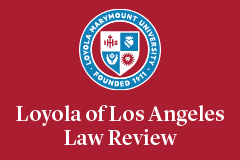Abstract
In the face of chronic drought, water utilities across California have turned to tiered water rates to promote conservation and curb consumer demand. However, recent legal challenges have called the constitutionality of tiered- rate schemes into question, threatening to deprive utilities of a critical conservation tool.
A patchwork of recent court decisions—the landmark Capistrano Taxpayers Association v. City of San Juan Capistrano most notable among them—have exposed an unresolved conflict between the California Constitution’s water rights and taxation provisions. Namely, how does Proposition 218’s restrictions on assessments for “property related services” apply to tiered water rates set by public water utilities?
This article calls on the California courts to expressly acknowledge the existence of the constitutional conflict and to provide clear guidance on how to resolve it. Previous decisions have presented two potential solutions: (1) requiring that rates be calculated based on aggregate water supply costs across the entire system, or (2) requiring that rates be calculated based on atomized water supply costs to individual parcels. As this article argues, the latter method— as adopted by the court in San Juan Capistrano—forces water utilities to undertake the impossible task of calculating individual water supply costs for millions of parcels. Courts should instead require that rates be set based on aggregate costs across the entire system.
Finally, this article looks at the legacy of the San Juan Capistrano decision and includes a case study of the Los Angeles Department of Water and Power’s rate scheme, which was introduced in San Juan Capistrano’s wake.
Recommended Citation
Travis Kaya, Muddying the Water: Tiered Water Rates After San Juan Capistrano, 51 Loy. L.A. L. Rev. 539 (2018).
Included in
Natural Resources Law Commons, State and Local Government Law Commons, Water Law Commons


